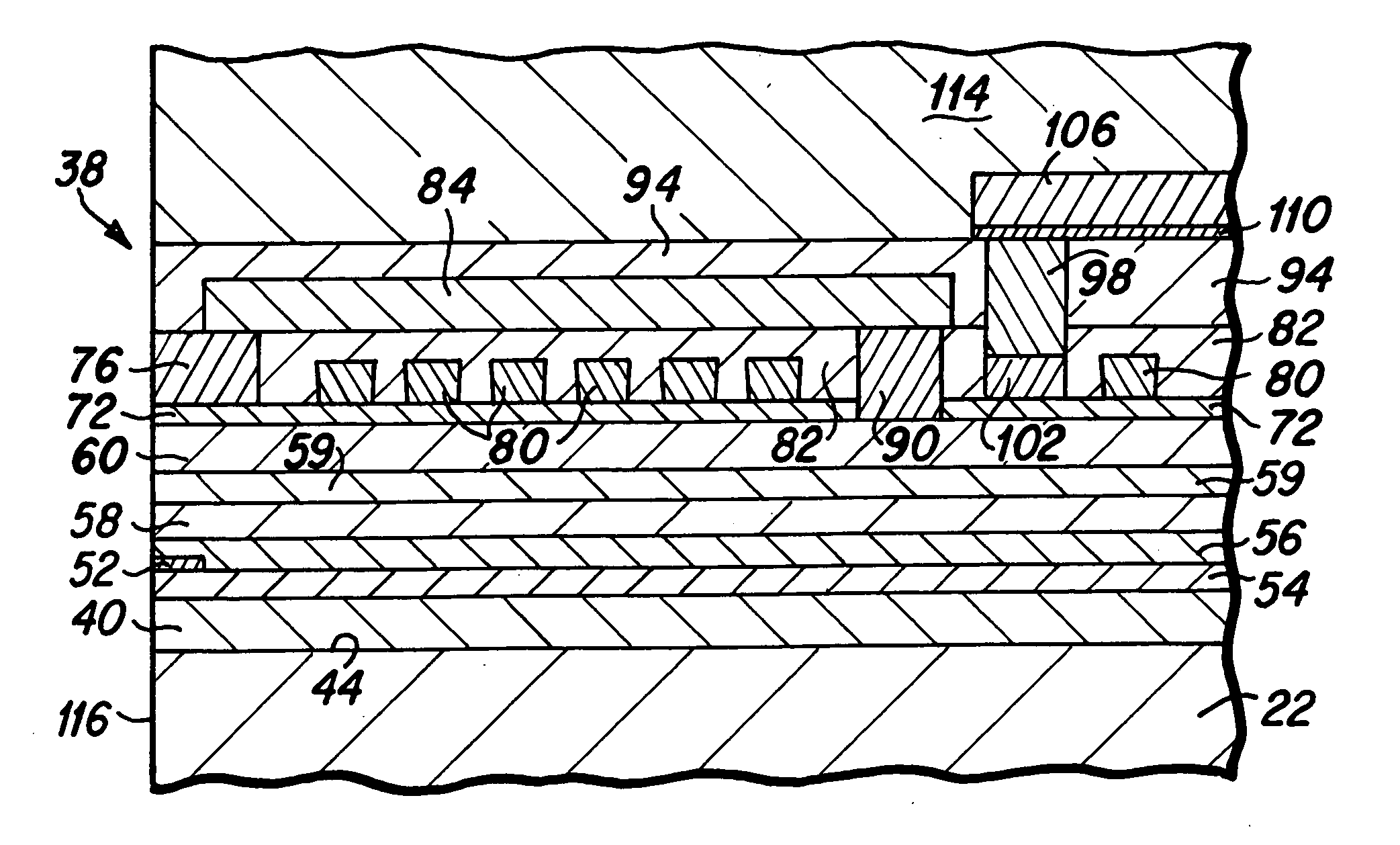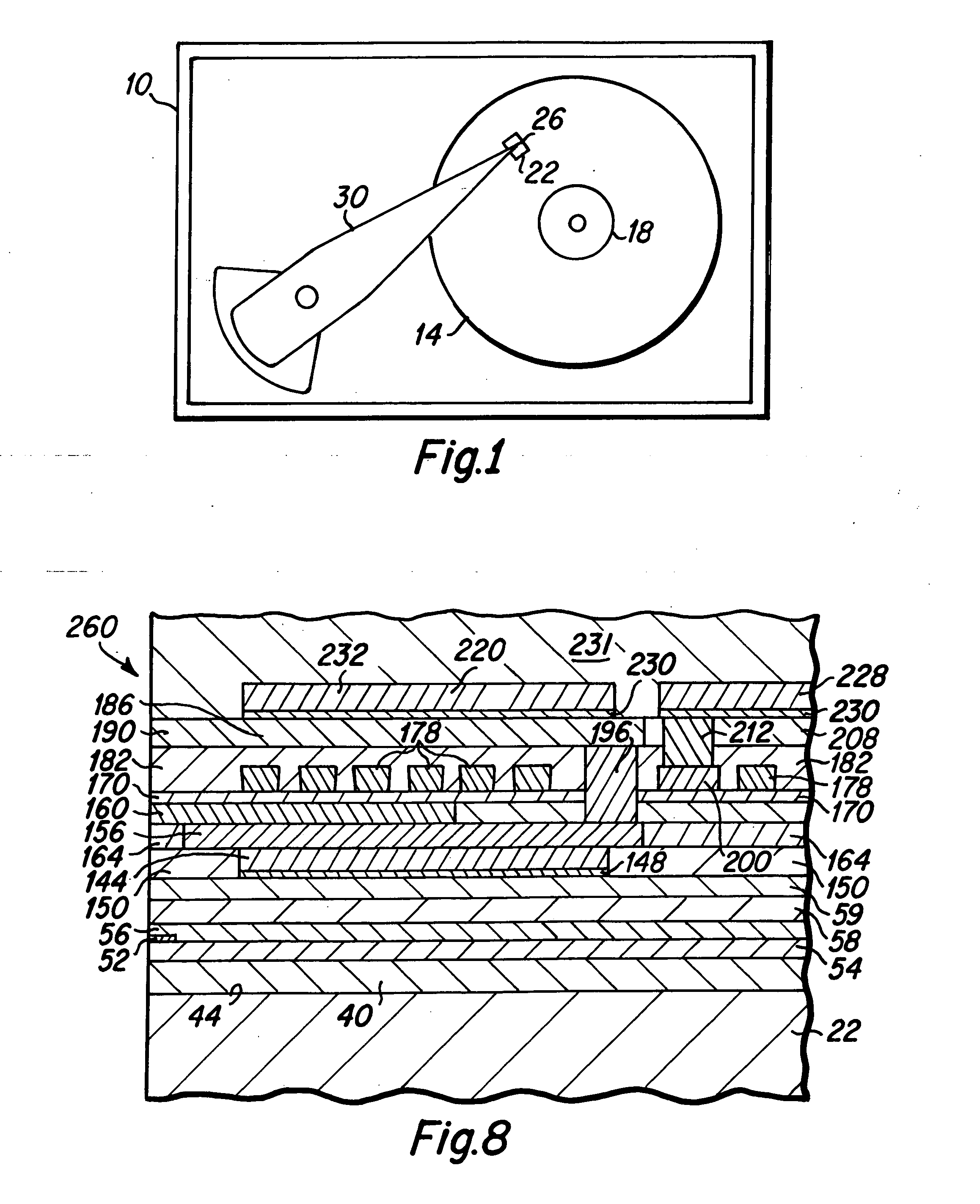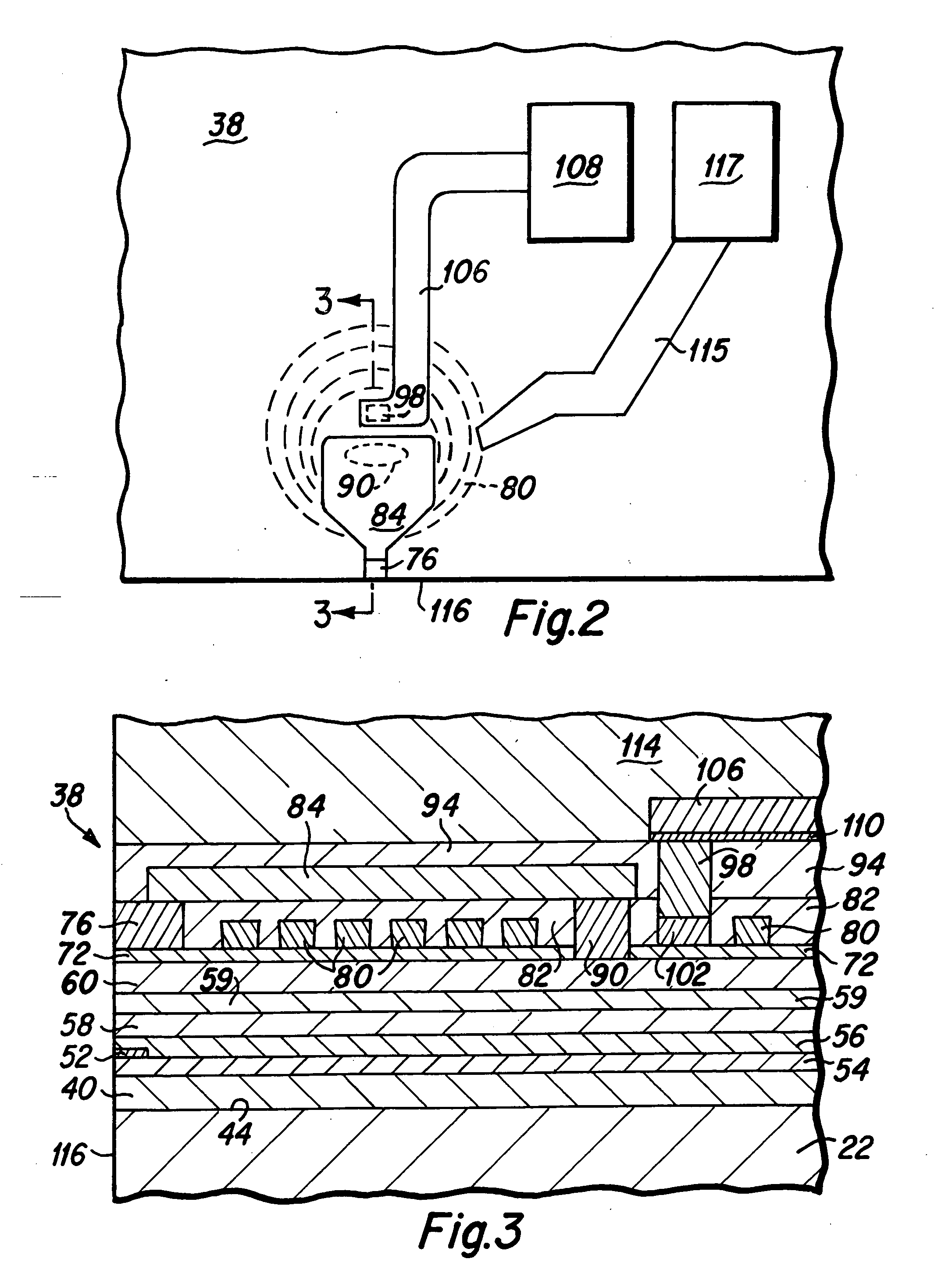Heat sink structure in an inductive write head and fabrication process therefor
a write head and write head technology, applied in the direction of heads with metal sheet cores, data recording, instruments, etc., can solve the problems of increasing the risk of heat damage to delicate pole tips and magnetoresistive sensor structures, the development and use of ever smaller and increasingly delicate magnetic pole tips, and the induction coil electrical current generation a significant amount of hea
- Summary
- Abstract
- Description
- Claims
- Application Information
AI Technical Summary
Benefits of technology
Problems solved by technology
Method used
Image
Examples
first embodiment
[0028] As will be understood from the following detailed description, the magnetic head of the present invention includes heat sink structures that are fabricated within the magnetic head to draw away excess heat that is generated within the induction coil and magnetic poles during the inductive write head operation. FIG. 4 is a top plan view depicting various components of a magnetic head 118 of the present invention, and FIG. 5 is a side cross-sectional view of the magnetic head depicted in FIG. 4, taken along lines 5-5 of FIG. 4. The magnetic head of the present invention, as depicted in FIGS. 4 and 5 includes many structures and components of the prior art magnetic head depicted in FIGS. 2 and 3, and similar structures are similarly numbered for ease of comprehension. Therefore, as depicted in FIGS. 4 and 5, the magnetic head of the present invention may include a first magnetic shield layer (S1) 40 that is formed on a slider body 22, a read head sensor element 52 that is dispos...
embodiment 118
[0034] A lower heat sink structure 144 is next fabricated upon the electrical insulation layer 59. The lower heat sink structure may be fabricated utilizing well known photolithographic techniques in which a seed layer 148 typically comprised of copper, is deposited, followed by the fabrication of a photoresist layer (not shown) having a heat sink trench formed therein, followed by the electroplating of the lower heat sink structure 144 that is preferably comprised of copper upon the seed layer 148 within the trench. Thereafter, the photoresist and excess seed layer are removed, and insulation material such as alumina 150 is deposited, and a chemical mechanical polishing (CMP) step is performed to create a flat upper surface to the heat sink structure 144 for the continued fabrication of further magnetic head structures. This photolithographic process for forming the lower heat sink 144 is substantially similar to the process for fabricating the electrical lead and heat sink of the ...
embodiment 140
[0036] As is best seen in the top view of FIG. 6, the upper heat sink 220 is preferably formed with a first enlarged portion 232 that is disposed above the yoke 192 and which is interconnected to a second substantial portion 236 that is disposed away from the critical components of the head 140. The lower heat sink 144 may be formed with a shape that is similar to the shape of the upper heat sink 220. The two heat sinks 144 and 220 of the magnetic head embodiment 140 serve to provide enhanced heat dissipation from the inductive write head and provide thermal protection to the read sensor 52 and pole tip 160 structures of the magnetic head 140.
[0037] In an enhanced embodiment of the magnetic head 140, as is best seen in FIG. 6, a heat sink interconnect via (not shown) may be fabricated through insulation layers that have been deposited down to the lower heat sink structure 144. This heat sink interconnect via may be fabricated in the same via formation step in which the electrical in...
PUM
| Property | Measurement | Unit |
|---|---|---|
| electrical | aaaaa | aaaaa |
| magnetic | aaaaa | aaaaa |
| areal data storage density | aaaaa | aaaaa |
Abstract
Description
Claims
Application Information
 Login to View More
Login to View More - R&D
- Intellectual Property
- Life Sciences
- Materials
- Tech Scout
- Unparalleled Data Quality
- Higher Quality Content
- 60% Fewer Hallucinations
Browse by: Latest US Patents, China's latest patents, Technical Efficacy Thesaurus, Application Domain, Technology Topic, Popular Technical Reports.
© 2025 PatSnap. All rights reserved.Legal|Privacy policy|Modern Slavery Act Transparency Statement|Sitemap|About US| Contact US: help@patsnap.com



